Addressing Inequity with Anti-Bias Education: Learning about Class and Fairness
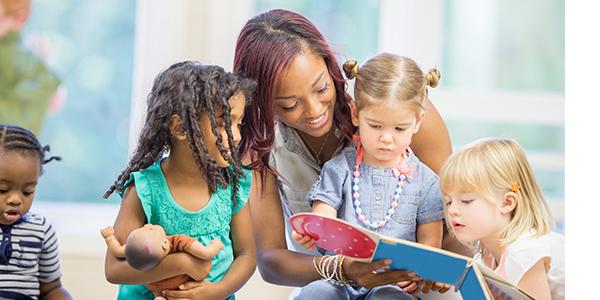
You are here
Jessica comes to school every day in sturdy jeans and T-shirts, but as soon as she arrives, she changes into the frilliest clothes she can find in the dramatic play corner, stuffing her home clothes into the back of her cubby. As the day progresses, she staunchly insists that the clothes she wears are her own clothes, worn from home. Jessica also begins taking clothing, usually pink, out of her classmates’ cubbies, again tearfully insisting they are really hers.
Her teacher speaks with Jessica’s teenage sister, who brings her to school each day. The sister reports that Jessica’s clothes are hand-me-downs from her two older brothers. “We’d all like new stuff if we could get it,” her sister says, “but Mom doesn’t have money for that.”
With that information in mind, Jessica’s teachers begin paying closer attention to the situation in the classroom. A number of the 4-year-old girls from affluent families show up every day in new, trendy pink or lavender outfits and spend a lot of time swapping clothes, changing in and out of clothes, and playing in front of the mirrors. The teachers have jokingly labeled this group “The Pink Connection” and often compliment them on their new dresses, lovely outfits, and appearances.
With a sense of shock, the teachers realize that the problem isn’t Jessica’s—it’s theirs. Jessica’s sense of not being good enough, of class and gender shame, is coming from her experience at school—and, they realize it isn’t a good environment for any of the children. They intentionally change their interactions with all the children, deemphasizing “new things” and stopping their comments on the children’s appearances.*
*This vignette was shared by Nancy K. Brown, an early childhood teacher, director, and consultant.
 The big picture: Economic class is real
The big picture: Economic class is real
Inequitable opportunities, privileges, and life experiences based on economic class deeply affect young children’s lives. Although a family’s economic resources do not determine how much they love their child or how skilled they are at parenting, a lack of those resources can make the fundamental necessities for their children’s healthy growth and development (e.g., safe housing, nutritious food, regular health care) very difficult or impossible to get.
Classism, the system of economic inequity and bias against people with low incomes and those in poverty, is very real in the United States but is often not well understood. Millions of children face challenges due to the multiple consequences of poverty.
Poverty, particularly when it is deep and persistent, can impede children’s ability to learn. It can contribute to poor mental and physical health. Children may have low energy due to lack of proper nutrition or suffer from environmental poisoning (e.g., from lead paint in their homes, toxic waste in their neighborhoods, lead in their drinking water). They may not be fully immunized, or they may have untreated chronic illnesses. They may live in neighborhoods with few parks, libraries, or public spaces or with high levels of violence. And they may be living in cars, on the streets, or in shelters.
In addition to experiencing the effects of their family’s income insecurity, young children also absorb value-laden attitudes and beliefs about themselves and others regarding where and how they live, what they do and don’t own, how they travel, what they wear, and so on. Explicit and implicit biases toward people with low incomes and those living in poverty tend to be negative, while biases about people with wealth are more likely to be positive.
Since classism most profoundly injures children in families with low incomes, it is important to critically analyze some of the biases their families face. One of the most widespread myths is that if people work hard, they will succeed and flourish. This myth ignores the realities of low-income work and of class privilege in education, resources, and contacts. Most people in poverty work very hard and yet remain poor. It is not unusual for adults in the family to hold more than one job, and even when both parents are employed, family income may still be below the poverty line. In America today, the single biggest predictor of economic success is the economic success of the family in which you are raised.
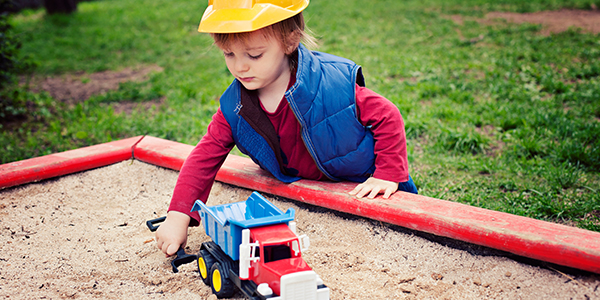 The value and importance of different kinds of work
The value and importance of different kinds of work
Children learn about whose work matters from the curriculum in their schools; from their families; and from children’s books, media and advertisements, videos, and toys. What they learn often emphasizes the work of people in professional and middle- to higher-income careers. “Community Helper” units in many curricula tend to focus on only a few types of work (doctors, nurses, firefighters, police officers), ignoring the many other types of work that also support a community’s quality of life (restaurant staff, farmworkers, store clerks, office staff, bus drivers). Children tune in to these messages about who matters, who is important, who is “real” and visible. The result for children from families who have lower income levels is often a beginning sense of shame and discomfort about themselves and their families.
“Princess, princess, I’m the princess,” Selina sings as she puts on an elaborate costume in the dramatic play corner. “You can be the maid,” she tells Shanice sternly. “You have to do everything I tell you.” The teacher who hears her wonders what connections, if any, Selina is making between her play and the reality that her mother cleans houses for others.
At the same time, families with middle or upper incomes or in professional or management work may implicitly or explicitly communicate to their children a sense of entitlement (e.g., that they have a greater right to the material resources of the world) as well as a sense of superiority over families with lower incomes. Teachers report often hearing statements such as, “I got lots more toys than you did. I got a new trike and a new soccer ball and two new dolls and lots more! What did you get for your birthday?” and “You can’t play with us because you do not have ___!” (fill in the latest, expensive, well-advertised toy).
Strategies and activities about economic class and fairness
Economic issues affect all children. The following suggestions will support all the children in your program, regardless of their economic backgrounds.
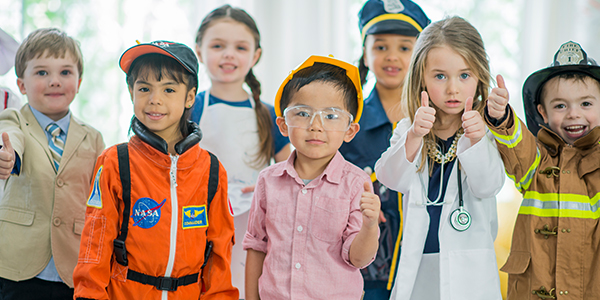 Create a welcoming and equitable learning community
Create a welcoming and equitable learning community
As you pay attention to economic class issues in your program, instead of looking for what children don’t know or what they are not able to do (a deficit approach to teaching), adapt activities to support the strengths children bring into your program.
-
Have the same high expectations for children from every family.
-
Pay attention to each child’s unique approach to learning, knowledge, and skills, which is shaped by their specific life experiences. Does the child tend to use words to show what she knows, or does she demonstrate what she can do? Does the child expect adults to tell him what they want him to do, or to ask him (e.g., “It’s time to set the table” versus “Would you like to set the table now?”).
-
Create beautiful environments for all children. Fresh paint, live plants, and clean, bright cushions do not have to be costly. Ask for contributions from neighborhood stores (which can be surprisingly accommodating when they know it is for a children’s program).
-
Be mindful of families’ concerns about clothing. Make or buy aprons for children to wear during messy play, and make sure the paints you use are truly washable. (Purple is often particularly difficult to remove.) Thrift stores are wonderful places to pick up large long-sleeved shirts that children can wear buttoned up as smocks. Have children wear plastic ponchos during water play. Remember that it may be difficult for families with low incomes to purchase new clothes and washing clothes can require spending many hours (and dollars) in laundromats. Children outgrow their clothes in all income groups. Arrange an ongoing clothing swap where families can donate clothing their children have outgrown and take home what they want.
-
Use sensory materials that are not food. For example, use birdseed rather than rice or cornmeal at your sensory table. Make finger paint instead of using pudding or yogurt. String leaves and seedpods rather than pasta. This is important both for families with food insecurity and for families who have plenty and do not recognize how waste hurts others.
Foster non-classist assumptions and interactions
Counter the pervasive messages that people need to have possessions to be valued or even to be noticed. You have a responsibility to children of all economic backgrounds to combat this harmful message of entitlement.
-
Make a decision not to focus on children’s new possessions during circle and sharing times. Encourage children to share information about experiences they had with their families. Invite children to bring in their oldest toy and talk about how they still play with it.
-
Encourage children to use toys and materials cooperatively. The approach employed in many early childhood settings—providing a quantity of the same item so children “won’t have to share”—conveys the message that private ownership and exclusive use are more important than collaboration.
-
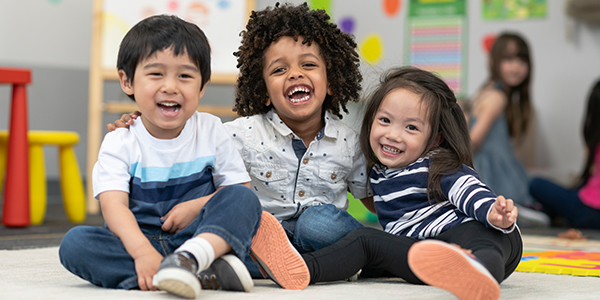 Make whole-class murals out of handprints or drawings.
Make whole-class murals out of handprints or drawings.
-
Create a class quilt, with each child contributing a square.
-
Ask pairs or teams of children to do specific tasks together (setting the snack tables, cleaning up the block area). Celebrate the important work they do in a class book called We All Work Together.
-
Focus on justice rather than charity: be cautious of introducing activities to “help poor people,” which can unintentionally convey messages of the superiority of the helper and the helplessness of the receiver. Frame activities as “making things fair” rather than “helping the poor.” For example, asking children to contribute toys for “the poor” for a holiday or event may teach pity and lead children to question whether families with low incomes really love their children because they do not buy them toys. In contrast, children can contribute to a toy bank in the classroom throughout the year where children are able to exchange and choose toys they want.
-
If your program celebrates or studies holidays, use them to emphasize gifts of the heart rather than purchased gifts. Ask children about what fun activities their family did together rather than what gifts they received. Create an ongoing class book about people being kind to one another, titled The Best Gift of All. Help children dictate stories for it throughout the year, and read it frequently at circle times.
- Create persona doll stories that help children recognize and challenge hurtful stories and behaviors that demean children from families who have low incomes. Acknowledge family strengths and skills for handling difficult economic realities in these stories. If you do not know much about families who cope with great economic challenges, talk to people in the community who do!
This article is adapted from excerpts of Chapter 10 in Anti-Bias Education for Young Children and Ourselves, by Louise Derman-Sparks and Julie Olsen Edwards. A NAEYC bestseller, this book helps early childhood educators fulfill their mission of helping all children reach their full potential. The new edition has major updates to all chapters. Visit NAEYC.org/books/anti-bias to learn more today!
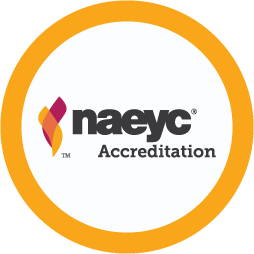
STANDARDS 2: CURRICULUM; 6: STAFF COMPETENCIES, PREPARATION, AND SUPPORT; 7: FAMILIES
2L: Social Studies
6D: Ongoing Professional Development
7A: Knowing and Understanding the Program’s Families
Photographs: © Getty Images
Louise Derman-Sparks, MA, has worked with children and adults in early childhood education for more than 50 years and is a faculty emerita of Pacific Oaks College. She is coauthor of several books, including Leading Anti-Bias Early Childhood Programs: A Guide for Change, Anti-Bias Education for Young Children and Ourselves, and Teaching/Learning Anti-Racism: A Developmental Approach.

Julie Olsen Edwards, coauthor of Anti-Bias Education for Young Children and Ourselves, was on the faculty of Cabrillo College’s early childhood education department for 45 years. A lifetime activist for children and families, she continues to write, teach, and consult on issues of equity, diversity, and anti-bias.
